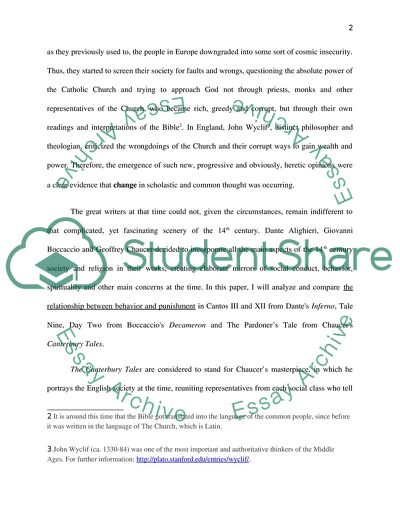Cite this document
(The Main Aspects Of The 14th-century Society In The Literature Term Paper - 1, n.d.)
The Main Aspects Of The 14th-century Society In The Literature Term Paper - 1. Retrieved from https://studentshare.org/literature/1751389-comparison-of-behavior-and-its-consequential-rewards-or-punishments-and-how-it-is-treated-by-the-author-in-dantes-inferno-boccaccios-decameron-and-chaucers-work
The Main Aspects Of The 14th-century Society In The Literature Term Paper - 1. Retrieved from https://studentshare.org/literature/1751389-comparison-of-behavior-and-its-consequential-rewards-or-punishments-and-how-it-is-treated-by-the-author-in-dantes-inferno-boccaccios-decameron-and-chaucers-work
(The Main Aspects Of The 14th-Century Society In The Literature Term Paper - 1)
The Main Aspects Of The 14th-Century Society In The Literature Term Paper - 1. https://studentshare.org/literature/1751389-comparison-of-behavior-and-its-consequential-rewards-or-punishments-and-how-it-is-treated-by-the-author-in-dantes-inferno-boccaccios-decameron-and-chaucers-work.
The Main Aspects Of The 14th-Century Society In The Literature Term Paper - 1. https://studentshare.org/literature/1751389-comparison-of-behavior-and-its-consequential-rewards-or-punishments-and-how-it-is-treated-by-the-author-in-dantes-inferno-boccaccios-decameron-and-chaucers-work.
“The Main Aspects Of The 14th-Century Society In The Literature Term Paper - 1”, n.d. https://studentshare.org/literature/1751389-comparison-of-behavior-and-its-consequential-rewards-or-punishments-and-how-it-is-treated-by-the-author-in-dantes-inferno-boccaccios-decameron-and-chaucers-work.


